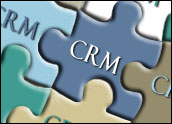
Pharmaceutical companies manage large quantities of content about their product lines. However, unlike other industries, the challenge of managing this information is exacerbated by regulatory and compliance demands and the need to manage information from multiple “touch points” across a diverse customer base including patients, healthcare providers and others.
While pharmaceutical companies invest millions every year in enterprise content management (ECM) systems to ensure information meets their unique demands, the systems don’t always serve their most useful purpose: benefiting customers and the bottom line.
When a customer calls in to ask a question, response times and methods to assemble the necessary information vary widely, regardless of how well a company maintains its information. This results in increased customer relationship management costs since highly skilled medical professionals are the people on the front lines fielding calls. To maximize effectiveness and minimize response times, ECM and CRM systems should work more closely together.
Information Where It’s Needed
Simply having best-in-class ECM and CRM systems is the first step in the solution. Through a best-in-class CRM system, a pharmaceutical company can take an inquiry and construct a basic response. However, that same company needs an effective way to give customer-facing employees access to organized, current, directly relevant and compliant product information in a timely fashion to a customer if it is to craft the response efficiently and effectively.
By integrating ECM and CRM, pharmaceutical companies hope to achieve the quick, accurate and compliant responses demanded of them. By linking the two systems, relevant, pre-filtered content is retrieved from the content management system based on data entered into the CRM system. Medical information professionals use only one interface, avoid duplicate data entry, and receive appropriate content in real time for use with a given customer.
Additionally, this solution can use dynamic enterprise publishing capabilities and electronic fulfillment mechanisms such as e-mail, Internet, fax, or other electronic methods to deliver content directly to customers in customer-specific, compliant documents. This strategy allows content to serve its most useful purpose — to drive the business aims of a pharmaceutical company forward in ways that positively impact revenue and customer satisfaction, all while meeting compliance goals.
Contextual Access
The key, however, is not in the technological integration, but in the solution design. The solution must be designed to provide “contextual access.” Contextual access is the ability to instantly access content that is directly relevant to the situation at hand, in the right format, compliant and tailored to the customer.
This approach to ECM and CRM integration can have profound effects on how pharmaceutical companies serve their customers. Recently, several major pharmaceutical companies were struggling with high product information request turnaround times, consistency and quality of responses, and high costs associated with response assembly. By automating several processes and aligning ECM and CRM more closely, these companies have been able to reduce turnaround times (in one case, from five days to one day) and better control CRM costs. Also, the integration laid the foundation for future data sharing among various departments within the companies.
The Latest Information
The architecture for this solution is extensible to many other uses, including dynamically publishing product information to the Web, conveying real-time and relevant information to a company’s sales team, and even establishing customer self-access. Many sales representatives now use a company intranet or other portal to access product information, but often that information is not linked to the company’s ECM system. Linking the portal to an ECM system can keep a sales team informed on product changes and new information. The integration can also cut down on maintenance costs, errors, and ensure the accuracy of the information every sales representative has access to.
As people become more involved in their own care and increasingly look for a “self-service” environment, customers will look at pharmaceutical companies as information providers as well as manufacturers. Linking an ECM system in some capacity to a customer-oriented Web site could help pharmaceutical companies better educate and engage their customers with up-to-date product information and other relevant information.
For pharmaceutical companies looking to improve response times to customer inquiries and maximize the value CRM and ECM systems can provide, linking the two systems could lead to enormous bottom-line results.
Gary Walker is the senior vice president for the applied technology solutions group of Baltimore-based RWD Technologies. He can be reached at [email protected].














































